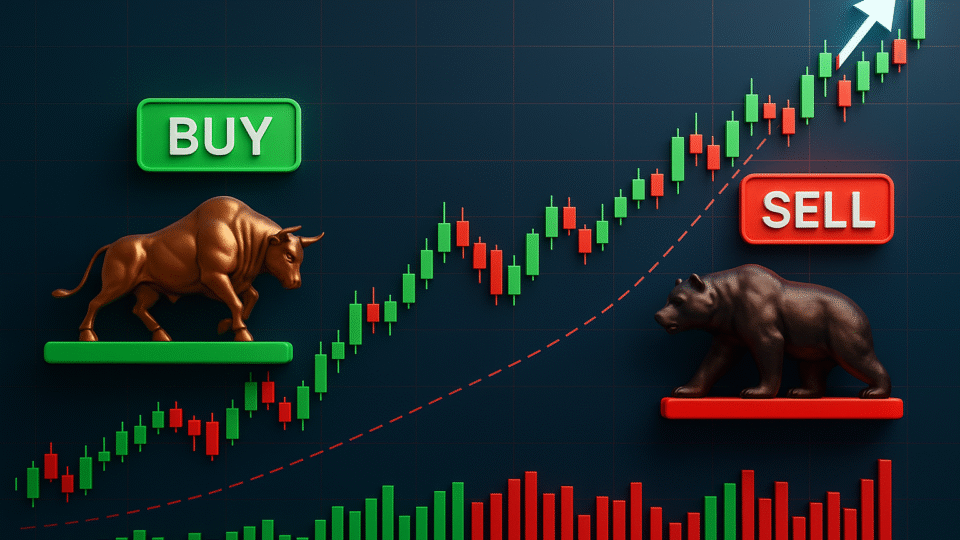
Bombay Stock Exchange: Asia’s Oldest Stock Exchange
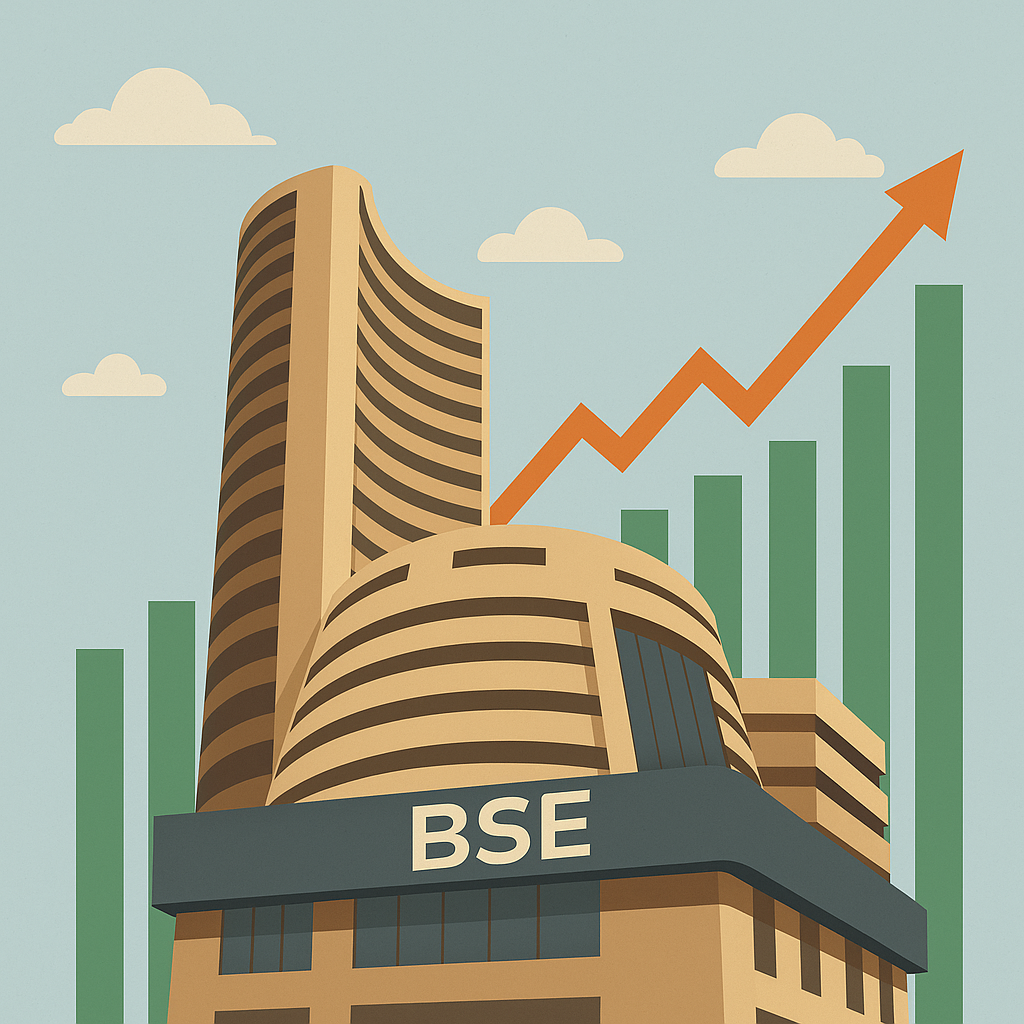
The Bombay Stock Exchange (BSE) is not just a stock market—it’s a legacy. Founded in 1875, it’s Asia’s oldest stock exchange, and one of the fastest in the world today. Located in the heart of Mumbai, BSE has played a monumental role in shaping India’s financial ecosystem, from pre-independence trading to today’s digital economy.
Let’s explore the journey, structure, and current updates of this iconic financial institution.
🏛️ A Legacy that Began Under a Tree
BSE’s journey started with a group of stockbrokers trading under a banyan tree near Mumbai’s Town Hall. In 1875, they formally established “The Native Share & Stock Brokers’ Association,” which would later become the Bombay Stock Exchange.
Today, it stands tall as Phiroze Jeejeebhoy Towers, a 29-storey iconic skyscraper at Dalal Street. The building is not only a landmark but a symbol of India’s financial aspirations.
📈 Sensex: The Pulse of Indian Economy
BSE introduced Sensex (Sensitive Index) in 1986. It consists of the top 30 listed companies across key sectors. Often called the heartbeat of Indian stock market, Sensex reflects market sentiment and economic shifts.
As of July 11, 2025, Sensex is trading around 82,500, down by nearly 0.83%, mainly due to weak global cues and IT sector drag. However, the long-term trend remains optimistic among analysts and investors.
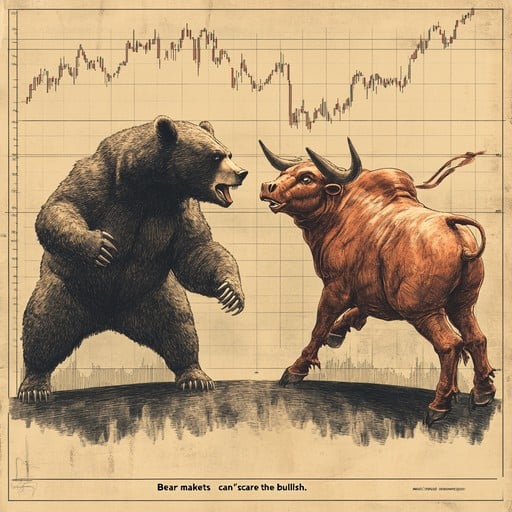
⚙️ How BSE Works
- Trading Time: 9:15 AM to 3:30 PM (Mon-Fri)
- Segments: Equity, Derivatives, Debt, Mutual Funds, SME, etc.
- Order Types: Limit, Market, Stop Loss, IOC, GTC
To trade on BSE, investors need:
- A PAN card
- A Demat account
- A Trading account through a registered broker
BSE also offers a mobile app and web portal for easy access to stock performance, charts, IPOs, and corporate announcements.
🚀 Recent Developments & Market News
🔹 Jane Street Controversy
SEBI is investigating large bets made on Sensex options by global firm Jane Street, causing a significant shake-up. As a result, BSE Ltd shares fell nearly 16% this week, hitting investor confidence.
🔹 Regulatory Changes Coming
SEBI has announced that weekly derivatives on BSE will expire every Thursday starting September 2025, aligning with NSE expiry days. This will simplify trading and improve liquidity.
🔹 Bond Transparency
BSE, along with NSE, has issued new advisories for bond investors to improve disclosure and reporting via the Online Bond Platform Providers (OBPPs).
💹 BSE vs NSE – A Quick Snapshot
| Feature | BSE | NSE |
|---|---|---|
| Founded | 1875 | 1992 |
| Benchmark Index | Sensex | Nifty 50 |
| Speed | 6 microseconds | 1 microsecond |
| Listed Companies | 5,700+ | 2,000+ |
| Market Cap (2025) | ₹370+ lakh crore | ₹380+ lakh crore |
Both exchanges are vital to India’s financial stability, though BSE leads in listing numbers, while NSE often dominates in trading volume.
📲 BSE Tools for Retail Investors
- BSE India App: Real-time updates, portfolio watch, IPO tracking
- BSE STAR MF: Simplified mutual fund platform
- BSE SME: Platform for small & medium enterprise listings
- Investor Education Programs: Online resources & webinars
Whether you’re a new investor or an experienced trader, BSE provides tools that cater to everyone.

🔚 Conclusion: BSE in the New Era
The Bombay Stock Exchange continues to evolve with changing market dynamics, technology, and regulations. Despite occasional turbulence like recent SEBI probes, BSE remains a reliable and robust marketplace for investors worldwide.
As India pushes toward becoming a $5 trillion economy, platforms like BSE will play a pivotal role in democratizing investment and accelerating financial inclusion.






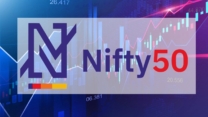


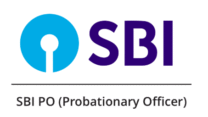




Yo88 là trang game tôi tin tưởng nhất! Bảo mật tốt, tỷ lệ thắng cao, chăm sóc khách hàng siêu nhiệt tình 💯 yo88
согласование перепланировки нежилого помещения в москве [url=www.pereplanirovka-nezhilogo-pomeshcheniya9.ru]www.pereplanirovka-nezhilogo-pomeshcheniya9.ru[/url] .
перепланировка нежилого здания [url=https://www.pereplanirovka-nezhilogo-pomeshcheniya9.ru]перепланировка нежилого здания[/url] .
согласование перепланировки нежилого здания [url=http://pereplanirovka-nezhilogo-pomeshcheniya10.ru]http://pereplanirovka-nezhilogo-pomeshcheniya10.ru[/url] .
перепланировка и согласование [url=www.pereplanirovka-nezhilogo-pomeshcheniya10.ru]www.pereplanirovka-nezhilogo-pomeshcheniya10.ru[/url] .
перепланировка здания [url=https://pereplanirovka-nezhilogo-pomeshcheniya11.ru]перепланировка здания[/url] .
регистрация перепланировки нежилого помещения [url=www.pereplanirovka-nezhilogo-pomeshcheniya11.ru]регистрация перепланировки нежилого помещения[/url] .
аренда грузоподъемной техники [url=arenda-mini-ekskavatora-v-moskve-2.ru]аренда грузоподъемной техники[/url] .
услуги мини-экскаватора [url=http://www.arenda-mini-ekskavatora-v-moskve-2.ru]http://www.arenda-mini-ekskavatora-v-moskve-2.ru[/url] .
электрические гардины для штор [url=https://karniz-elektroprivodom.ru]https://karniz-elektroprivodom.ru[/url] .
электрический карниз для штор купить [url=http://www.karniz-elektroprivodom.ru]http://www.karniz-elektroprivodom.ru[/url] .
рулонные шторы с электроприводом цена [url=http://rulonnaya-shtora-s-elektroprivodom.ru/]рулонные шторы с электроприводом цена[/url] .
рулонные шторы на окна купить [url=https://rulonnaya-shtora-s-elektroprivodom.ru/]рулонные шторы на окна купить[/url] .
натяжные потолки в нижнем новгороде [url=www.stretch-ceilings-nizhniy-novgorod.ru/]www.stretch-ceilings-nizhniy-novgorod.ru/[/url] .
натяжные потолки нижний новгород официальный сайт [url=https://stretch-ceilings-nizhniy-novgorod.ru]https://stretch-ceilings-nizhniy-novgorod.ru[/url] .
перепланировка цена [url=http://proekt-pereplanirovki-kvartiry17.ru]перепланировка цена[/url] .
оформление перепланировки квартиры в москве [url=https://proekt-pereplanirovki-kvartiry17.ru]оформление перепланировки квартиры в москве[/url] .
согласование перепланировки помещений [url=https://soglasovanie-pereplanirovki-kvartiry3.ru]https://soglasovanie-pereplanirovki-kvartiry3.ru[/url] .
cjukfcjdfybt [url=http://www.soglasovanie-pereplanirovki-kvartiry3.ru]http://www.soglasovanie-pereplanirovki-kvartiry3.ru[/url] .
изготовление проекта перепланировки квартиры [url=proekt-pereplanirovki-kvartiry11.ru]изготовление проекта перепланировки квартиры[/url] .
проект перепланировки квартиры цена москва [url=proekt-pereplanirovki-kvartiry11.ru]proekt-pereplanirovki-kvartiry11.ru[/url] .
перепланировка москва [url=www.soglasovanie-pereplanirovki-kvartiry4.ru]перепланировка москва[/url] .
перепланировка помещений [url=www.soglasovanie-pereplanirovki-kvartiry4.ru/]перепланировка помещений[/url] .
продвижение сайта по россии [url=https://reiting-seo-agentstv.ru/]продвижение сайта по россии[/url] .
услуги seo компании [url=https://reiting-seo-agentstv.ru/]услуги seo компании[/url] .
seo компания [url=https://seo-prodvizhenie-reiting-kompanij.ru/]seo компания[/url] .
seo продвижение сайта заказать в москве [url=https://www.seo-prodvizhenie-reiting-kompanij.ru]seo продвижение сайта заказать в москве[/url] .
seo optimization ranking [url=top-10-seo-prodvizhenie.ru]top-10-seo-prodvizhenie.ru[/url] .
топ seo агентств [url=http://www.top-10-seo-prodvizhenie.ru]http://www.top-10-seo-prodvizhenie.ru[/url] .
топ seo [url=www.reiting-seo-kompaniy.ru]топ seo[/url] .
seo агентство москва [url=https://reiting-seo-kompaniy.ru]https://reiting-seo-kompaniy.ru[/url] .
1xbet turkiye [url=www.1xbet-giris-1.com/]www.1xbet-giris-1.com/[/url] .
xbet [url=http://www.1xbet-giris-1.com]http://www.1xbet-giris-1.com[/url] .
1xbet mobil giri? [url=http://1xbet-giris-7.com]http://1xbet-giris-7.com[/url] .
1 xbet [url=http://1xbet-giris-7.com/]1 xbet[/url] .
1xbet turkiye [url=https://1xbet-giris-10.com/]1xbet turkiye[/url] .
1xbetgiri? [url=http://1xbet-giris-10.com/]1xbetgiri?[/url] .
1xbet guncel [url=www.1xbet-4.com/]www.1xbet-4.com/[/url] .
bahis sitesi 1xbet [url=1xbet-4.com]1xbet-4.com[/url] .
1xbet com giri? [url=1xbet-10.com]1xbet-10.com[/url] .
1xbet [url=https://1xbet-10.com/]1xbet[/url] .
кухни от производителя спб недорого и качественно [url=https://kuhni-spb-2.ru]https://kuhni-spb-2.ru[/url] .
кухни на заказ санкт петербург от производителя [url=https://kuhni-spb-2.ru/]kuhni-spb-2.ru[/url] .
1xbet g?ncel giri? [url=www.1xbet-14.com]1xbet g?ncel giri?[/url] .
1xbetgiri? [url=https://1xbet-14.com/]1xbet-14.com[/url] .
1xbet giri? yapam?yorum [url=http://1xbet-17.com/]1xbet giri? yapam?yorum[/url] .
1xbet g?ncel adres [url=https://1xbet-17.com]1xbet g?ncel adres[/url] .
медицинская аппаратура [url=https://medicinskoe–oborudovanie.ru/]медицинская аппаратура[/url] .
мед оборудование [url=http://medicinskoe–oborudovanie.ru]мед оборудование[/url] .
анонимная наркологическая клиника [url=https://narkologicheskaya-klinika-24.ru/]narkologicheskaya-klinika-24.ru[/url] .
наркологическое отделение наркологии [url=http://www.narkologicheskaya-klinika-24.ru]http://www.narkologicheskaya-klinika-24.ru[/url] .
трезвая жизнь [url=http://www.narkologicheskaya-klinika-25.ru]http://www.narkologicheskaya-klinika-25.ru[/url] .
наркологическая помощь [url=http://narkologicheskaya-klinika-25.ru/]наркологическая помощь[/url] .
melbetofficialsite [url=http://melbetofficialsite.ru]melbetofficialsite[/url] .
мелбет официальная контора [url=http://melbetofficialsite.ru]мелбет официальная контора[/url] .
Good day! Do you use Twitter? I’d like to follow you if that would be ok. I’m absolutely enjoying your blog and look forward to new posts.
виртуальные номера купить
маркетинг в интернете блог [url=https://statyi-o-marketinge7.ru/]https://statyi-o-marketinge7.ru/[/url] .
блог о рекламе и аналитике [url=https://www.statyi-o-marketinge7.ru]https://www.statyi-o-marketinge7.ru[/url] .
seo специалист [url=https://kursy-seo-11.ru/]seo специалист[/url] .
Ich bin komplett hin und weg von SpinBetter Casino, es erzeugt eine Spielenergie, die fesselt. Der Katalog ist reichhaltig und variiert, mit aufregenden Sportwetten. Der Support ist 24/7 erreichbar, garantiert top Hilfe. Der Ablauf ist unkompliziert, trotzdem die Offers konnten gro?zugiger ausfallen. Alles in allem, SpinBetter Casino ist eine Plattform, die uberzeugt fur Krypto-Enthusiasten ! Daruber hinaus die Navigation ist kinderleicht, erleichtert die gesamte Erfahrung. Ein Pluspunkt ist die Community-Events, die den Spa? verlangern.
https://spinbettercasino.de/|
Galera, preciso compartilhar minha experiencia no 4PlayBet Casino porque superou minhas expectativas. A variedade de jogos e surreal: poquer estrategico, todos bem otimizados ate no celular. O suporte foi bem prestativo, responderam em minutos pelo chat, algo que passa seguranca. Fiz saque em PIX e o dinheiro entrou mais ligeiro do que imaginei, ponto fortissimo. Se tivesse que criticar, diria que faltam bonus extras, mas isso nao estraga a experiencia. Pra concluir, o 4PlayBet Casino vale demais a pena. Ja virou parte da minha rotina.
brazzers office 4play|
Ich bin vollig uberzeugt von Cat Spins Casino, es ist ein Ort voller Energie. Das Spieleportfolio ist unglaublich breit, mit stilvollen Tischspielen. Er bietet einen gro?artigen Vorteil. Die Mitarbeiter sind immer hilfsbereit. Gewinne kommen sofort an, trotzdem haufigere Promos wurden begeistern. Zum Schluss, Cat Spins Casino sorgt fur kontinuierlichen Spa?. Nebenbei die Plattform ist visuell ansprechend, was jede Session spannender macht. Ein hervorragendes Plus sind die sicheren Krypto-Zahlungen, ma?geschneiderte Vorteile liefern.
Online besuchen|
Ich bin total hingerissen von Cat Spins Casino, es sorgt fur pure Unterhaltung. Es gibt unzahlige packende Spiele, mit aufregenden Live-Casino-Erlebnissen. Der Bonus ist wirklich stark. Erreichbar 24/7 per Chat oder E-Mail. Gewinne werden schnell uberwiesen, aber ein paar Freispiele mehr waren super. Alles in allem, Cat Spins Casino bietet ein einmaliges Erlebnis. Daruber hinaus ist das Design stilvoll und modern, jede Session unvergesslich macht. Ein starker Vorteil die zahlreichen Sportwetten-Moglichkeiten, individuelle Vorteile liefern.
Online besuchen|
I’m addicted to the energy at Pinco, you sense the winning vibe everywhere. There’s a flood of exciting games, including titles optimized for Bitcoin. With seamless transactions. The help desk is excellent. Cashouts are lightning-fast, though larger deals would improve the vibe. In short, Pinco is a platform that delivers. Extra perk the interface is intuitive and fast, which makes every moment count. A strong element are the fast crypto transactions, that strengthens player bonds.
Click here|
Je suis fascine par Ruby Slots Casino, on ressent une ambiance festive. Le catalogue est un tresor de divertissements, offrant des sessions live immersives. Il booste votre aventure des le depart. Les agents sont rapides et pros. Les gains arrivent sans delai, neanmoins des bonus diversifies seraient un atout. En fin de compte, Ruby Slots Casino est une plateforme qui pulse. Pour ajouter le design est tendance et accrocheur, ajoute une touche de dynamisme. Un bonus les evenements communautaires dynamiques, garantit des paiements securises.
Voir la page d’accueil|
J’ai une passion debordante pour Ruby Slots Casino, c’est un lieu ou l’adrenaline coule a flots. Le choix de jeux est tout simplement enorme, proposant des jeux de table sophistiques. Il propulse votre jeu des le debut. Le support est fiable et reactif. Les transactions sont fiables et efficaces, cependant des bonus plus frequents seraient un hit. En bref, Ruby Slots Casino offre une aventure inoubliable. En complement le design est style et moderne, amplifie l’adrenaline du jeu. Un avantage les tournois reguliers pour s’amuser, qui stimule l’engagement.
Cliquer maintenant|
Je suis captive par Sugar Casino, il cree une experience captivante. Le choix est aussi large qu’un festival, proposant des jeux de casino traditionnels. 100% jusqu’a 500 € avec des spins gratuits. Le suivi est d’une precision remarquable. Les transactions sont toujours fiables, par ailleurs quelques free spins en plus seraient bienvenus. En somme, Sugar Casino merite une visite dynamique. En extra le design est moderne et energique, ajoute une touche de dynamisme. Un plus les evenements communautaires dynamiques, assure des transactions fiables.
Voir la page|
J’adore la vibe de Sugar Casino, ca invite a plonger dans le fun. Le catalogue est un tresor de divertissements, incluant des paris sur des evenements sportifs. 100% jusqu’a 500 € plus des tours gratuits. Le support client est irreprochable. Les retraits sont lisses comme jamais, mais encore des bonus diversifies seraient un atout. En bref, Sugar Casino assure un divertissement non-stop. D’ailleurs la plateforme est visuellement vibrante, ce qui rend chaque moment plus vibrant. Un point fort les tournois frequents pour l’adrenaline, renforce le lien communautaire.
Commencer Г explorer|
Je suis bluffe par Sugar Casino, c’est une plateforme qui deborde de dynamisme. Les options sont aussi vastes qu’un horizon, proposant des jeux de casino traditionnels. Avec des depots rapides et faciles. Disponible 24/7 par chat ou email. Les transactions sont d’une fiabilite absolue, par ailleurs des offres plus consequentes seraient parfaites. En resume, Sugar Casino est un incontournable pour les joueurs. En complement l’interface est intuitive et fluide, donne envie de prolonger l’aventure. Un bonus les options de paris sportifs variees, qui stimule l’engagement.
DГ©couvrir|
Je suis enthousiaste a propos de 7BitCasino, ca ressemble a une energie de jeu irresistible. Les options de jeu sont riches et diversifiees, avec des machines a sous modernes et captivantes. Les agents sont disponibles 24/7, repondant en un clin d’?il. Les paiements sont fluides et securises, cependant les promotions pourraient etre plus genereuses, afin de maximiser l’experience. En fin de compte, 7BitCasino est un incontournable pour les amateurs de casino en ligne ! Par ailleurs le site est concu avec style et modernite, ce qui intensifie le plaisir de jouer.
7bitcasino free spins code|
Ich bin beeindruckt von der Qualitat bei Cat Spins Casino, es ladt zu spannenden Spielen ein. Das Angebot ist ein Paradies fur Spieler, mit dynamischen Wettmoglichkeiten. Der Bonus fur Neukunden ist attraktiv. Der Kundensupport ist erstklassig. Der Prozess ist unkompliziert, in seltenen Fallen mehr Aktionen waren ein Gewinn. Insgesamt, Cat Spins Casino ist ein Ort fur pure Unterhaltung. Au?erdem die Seite ist schnell und ansprechend, einen Hauch von Eleganz hinzufugt. Ein tolles Feature ist das VIP-Programm mit einzigartigen Belohnungen, personliche Vorteile bereitstellen.
Genauer ansehen|
J’adore le dynamisme de Ruby Slots Casino, on y trouve une energie contagieuse. La bibliotheque est pleine de surprises, comprenant des jeux compatibles avec les cryptos. Il donne un elan excitant. Le support client est irreprochable. Les transactions sont toujours fiables, bien que des bonus plus varies seraient un plus. En conclusion, Ruby Slots Casino garantit un amusement continu. Par ailleurs l’interface est simple et engageante, ajoute une vibe electrisante. A mettre en avant les options variees pour les paris sportifs, garantit des paiements securises.
Commencer Г lire|
J’adore la vibe de Ruby Slots Casino, on ressent une ambiance festive. Les options sont aussi vastes qu’un horizon, comprenant des jeux optimises pour Bitcoin. Il donne un avantage immediat. Les agents sont rapides et pros. Les transactions sont toujours securisees, en revanche des recompenses en plus seraient un bonus. Globalement, Ruby Slots Casino vaut une exploration vibrante. En extra le site est rapide et immersif, ce qui rend chaque moment plus vibrant. Particulierement cool les paiements en crypto rapides et surs, offre des recompenses continues.
Visiter maintenant|
Je suis totalement conquis par Ruby Slots Casino, ca pulse comme une soiree animee. Les options de jeu sont incroyablement variees, proposant des jeux de table sophistiques. Avec des depots fluides. Le service client est excellent. Les gains sont transferes rapidement, par ailleurs plus de promos regulieres ajouteraient du peps. Pour finir, Ruby Slots Casino offre une experience inoubliable. Pour couronner le tout la navigation est simple et intuitive, incite a rester plus longtemps. Un avantage les options de paris sportifs diversifiees, qui dynamise l’engagement.
VГ©rifier le site|
автоматические карнизы [url=http://www.elektrokarniz797.ru]автоматические карнизы[/url] .
электрокарнизы для штор [url=http://www.elektrokarniz797.ru]электрокарнизы для штор[/url] .
Ich bin beeindruckt von Cat Spins Casino, es verspricht ein einzigartiges Abenteuer. Das Angebot an Titeln ist riesig, mit interaktiven Live-Spielen. Der Bonus fur Neukunden ist attraktiv. Der Service ist rund um die Uhr verfugbar. Auszahlungen sind zugig und unkompliziert, in manchen Fallen mehr Bonusvarianten waren ein Hit. In Summe, Cat Spins Casino bietet ein unvergleichliches Erlebnis. Hinzu kommt die Plattform ist visuell ansprechend, das Spielerlebnis steigert. Ein tolles Extra die lebendigen Community-Events, personliche Vorteile bereitstellen.
Jetzt entdecken|
Fantastic website you have here but I was wanting to know if you knew of any user discussion forums that cover the same topics talked about in this article? I’d really love to be a part of community where I can get feedback from other experienced people that share the same interest. If you have any recommendations, please let me know. Appreciate it!
roulettino casino
заказать онлайн трансляцию [url=http://zakazat-onlayn-translyaciyu4.ru]заказать онлайн трансляцию[/url] .
организация трансляции [url=https://www.zakazat-onlayn-translyaciyu5.ru]организация трансляции[/url] .
заказать трансляцию мероприятия [url=zakazat-onlayn-translyaciyu5.ru]zakazat-onlayn-translyaciyu5.ru[/url] .
Ich bin beeindruckt von Cat Spins Casino, es schafft eine aufregende Atmosphare. Die Auswahl ist atemberaubend vielfaltig, mit Spielautomaten in beeindruckenden Designs. Er macht den Einstieg unvergesslich. Der Support ist effizient und professionell. Der Prozess ist einfach und transparent, ab und zu zusatzliche Freispiele waren ein Bonus. Kurz und bundig, Cat Spins Casino ist ein Ort fur pure Unterhaltung. Daruber hinaus die Benutzeroberflache ist klar und flussig, einen Hauch von Eleganz hinzufugt. Ein Hauptvorteil die vielfaltigen Wettmoglichkeiten, die Gemeinschaft starken.
Heute besuchen|
Ich bin ein gro?er Fan von Cat Spins Casino, es schafft eine elektrisierende Atmosphare. Die Auswahl ist atemberaubend vielfaltig, inklusive dynamischer Sportwetten. Der Willkommensbonus ist gro?zugig. Der Support ist schnell und freundlich. Transaktionen sind immer sicher, manchmal mehr Bonusvarianten waren ein Hit. Im Gro?en und Ganzen, Cat Spins Casino ist ein Ort fur pure Unterhaltung. Hinzu kommt die Oberflache ist glatt und benutzerfreundlich, das Spielerlebnis bereichert. Ein starkes Plus die regelma?igen Wettbewerbe fur Spannung, die Teilnahme fordern.
Jetzt zugreifen|
Ich bin abhangig von SpinBetter Casino, es ist eine Erfahrung, die wie ein Wirbelsturm pulsiert. Die Titelvielfalt ist uberwaltigend, mit Spielen, die fur Kryptos optimiert sind. Die Hilfe ist effizient und pro, garantiert top Hilfe. Die Auszahlungen sind ultraschnell, ab und an regelma?igere Aktionen waren toll. Global gesehen, SpinBetter Casino ist absolut empfehlenswert fur Online-Wetten-Fans ! Nicht zu vergessen die Site ist schnell und stylish, verstarkt die Immersion. Zusatzlich zu beachten die Community-Events, die den Einstieg erleichtern.
spinbettercasino.de|
Je suis enthousiasme par Ruby Slots Casino, ca invite a l’aventure. On trouve une gamme de jeux eblouissante, avec des slots aux designs captivants. Le bonus de bienvenue est genereux. Le service client est excellent. Les paiements sont surs et efficaces, de temps a autre des bonus plus frequents seraient un hit. En bref, Ruby Slots Casino est un incontournable pour les joueurs. Pour couronner le tout la plateforme est visuellement electrisante, donne envie de continuer l’aventure. Particulierement attrayant les tournois reguliers pour s’amuser, cree une communaute vibrante.
Parcourir maintenant|
Je suis fascine par Sugar Casino, ca donne une vibe electrisante. Les jeux proposes sont d’une diversite folle, incluant des paris sur des evenements sportifs. Il offre un coup de pouce allechant. Le service d’assistance est au point. Les retraits sont ultra-rapides, de temps en temps des recompenses additionnelles seraient ideales. Au final, Sugar Casino offre une experience hors du commun. Pour ajouter la navigation est claire et rapide, ce qui rend chaque partie plus fun. Egalement super les transactions crypto ultra-securisees, propose des privileges personnalises.
Aller sur le site|
Je suis accro a Ruby Slots Casino, on y trouve une energie contagieuse. Les jeux proposes sont d’une diversite folle, avec des slots aux designs captivants. 100% jusqu’a 500 € + tours gratuits. Le support est rapide et professionnel. Les paiements sont securises et rapides, rarement des bonus plus varies seraient un plus. Au final, Ruby Slots Casino est un must pour les passionnes. Notons aussi le design est style et moderne, apporte une touche d’excitation. Un avantage les evenements communautaires dynamiques, offre des bonus exclusifs.
Explorer la page|
Ich habe eine Leidenschaft fur Cat Spins Casino, es begeistert mit Dynamik. Das Angebot ist ein Traum fur Spieler, mit packenden Live-Casino-Optionen. Der Bonus ist wirklich stark. Der Support ist professionell und schnell. Transaktionen sind immer sicher, in seltenen Fallen regelma?igere Promos wurden das Spiel aufwerten. In Summe, Cat Spins Casino ist ein Ort fur pure Unterhaltung. Nebenbei die Seite ist schnell und attraktiv, eine Prise Spannung hinzufugt. Ein attraktives Extra ist das VIP-Programm mit exklusiven Stufen, ma?geschneiderte Privilegien liefern.
Jetzt Г¶ffnen|
Adoro o brilho de BetorSpin Casino, e um cassino online que gira como um asteroide em chamas. A gama do cassino e simplesmente uma constelacao de prazeres, com jogos de cassino perfeitos pra criptomoedas. Os agentes do cassino sao rapidos como um foguete estelar, dando solucoes na hora e com precisao. Os pagamentos do cassino sao lisos e blindados, de vez em quando as ofertas do cassino podiam ser mais generosas. Em resumo, BetorSpin Casino e um cassino online que e uma galaxia de diversao para quem curte apostar com estilo estelar no cassino! E mais a navegacao do cassino e facil como uma orbita lunar, o que torna cada sessao de cassino ainda mais estelar.
betorspin cassino|
Ich bin beeindruckt von der Qualitat bei Cat Spins Casino, es bietet eine dynamische Erfahrung. Die Auswahl ist einfach unschlagbar, mit aufregenden Live-Casino-Erlebnissen. 100 % bis zu 500 € plus Freispiele. Der Support ist professionell und schnell. Auszahlungen sind einfach und schnell, trotzdem waren mehr Bonusvarianten ein Plus. Im Gro?en und Ganzen, Cat Spins Casino ist ein Top-Ziel fur Casino-Fans. Ubrigens ist das Design zeitgema? und attraktiv, eine vollstandige Eintauchen ermoglicht. Ein starker Vorteil ist das VIP-Programm mit besonderen Vorteilen, regelma?ige Boni bieten.
Jetzt starten|
Ich habe eine Leidenschaft fur Cat Spins Casino, es ladt zu spannenden Spielen ein. Die Auswahl ist so gro? wie ein Casino-Floor, mit Spielautomaten in beeindruckenden Designs. Der Willkommensbonus ist ein Highlight. Der Kundendienst ist hervorragend. Gewinne werden schnell uberwiesen, in seltenen Fallen waren mehr Bonusvarianten ein Plus. Alles in allem, Cat Spins Casino ist perfekt fur Casino-Liebhaber. Zudem die Seite ist schnell und ansprechend, einen Hauch von Eleganz hinzufugt. Ein starker Vorteil die regelma?igen Wettbewerbe fur Spannung, individuelle Vorteile liefern.
http://www.catspinsbonus.com|
Ich bin beeindruckt von SpinBetter Casino, es liefert ein Abenteuer voller Energie. Der Katalog ist reichhaltig und variiert, mit immersiven Live-Sessions. Die Agenten sind blitzschnell, garantiert top Hilfe. Die Gewinne kommen prompt, obwohl mehr Rewards waren ein Plus. Zum Ende, SpinBetter Casino ist ein Muss fur alle Gamer fur Adrenalin-Sucher ! Hinzu kommt das Design ist ansprechend und nutzerfreundlich, erleichtert die gesamte Erfahrung. Hervorzuheben ist die schnellen Einzahlungen, die Flexibilitat bieten.
https://spinbettercasino.de/|
J’adore l’ambiance electrisante de Sugar Casino, il procure une sensation de frisson. Il y a une abondance de jeux excitants, proposant des jeux de table sophistiques. Le bonus d’inscription est attrayant. Disponible 24/7 par chat ou email. Les paiements sont surs et fluides, cependant des recompenses supplementaires dynamiseraient le tout. Pour conclure, Sugar Casino est un endroit qui electrise. Ajoutons aussi le site est rapide et engageant, apporte une touche d’excitation. Un bonus les options de paris sportifs variees, cree une communaute vibrante.
Commencer maintenant|
Je suis bluffe par Ruby Slots Casino, on y trouve une energie contagieuse. Le catalogue est un tresor de divertissements, avec des machines a sous aux themes varies. Il rend le debut de l’aventure palpitant. Le suivi est d’une precision remarquable. Les paiements sont surs et fluides, toutefois quelques tours gratuits supplementaires seraient cool. En fin de compte, Ruby Slots Casino est un incontournable pour les joueurs. De plus la navigation est fluide et facile, permet une plongee totale dans le jeu. Egalement excellent les evenements communautaires dynamiques, garantit des paiements securises.
Cliquez ici|
Ich schatze die Energie bei Cat Spins Casino, es schafft eine aufregende Atmosphare. Die Spielauswahl ist beeindruckend, mit modernen Slots in ansprechenden Designs. Der Bonus ist wirklich stark. Der Service ist rund um die Uhr verfugbar. Die Zahlungen sind sicher und zuverlassig, dennoch gro?ere Angebote waren super. In Summe, Cat Spins Casino ist eine Plattform, die uberzeugt. Daruber hinaus die Navigation ist einfach und klar, zum Bleiben einladt. Ein gro?es Plus die lebendigen Community-Events, die die Community enger zusammenschwei?en.
Website Г¶ffnen|
J’ai un faible pour Sugar Casino, il propose une aventure palpitante. La bibliotheque est pleine de surprises, incluant des paris sur des evenements sportifs. Avec des depots fluides. Disponible 24/7 pour toute question. Les retraits sont fluides et rapides, a l’occasion des recompenses supplementaires seraient parfaites. En somme, Sugar Casino offre une experience inoubliable. A noter la navigation est fluide et facile, permet une plongee totale dans le jeu. Un atout le programme VIP avec des avantages uniques, qui booste la participation.
Explorer plus|
Galera, quero registrar aqui no 4PlayBet Casino porque me impressionou bastante. A variedade de jogos e bem acima da media: jogos ao vivo imersivos, todos funcionando perfeito. O suporte foi rapido, responderam em minutos pelo chat, algo que vale elogio. Fiz saque em Bitcoin e o dinheiro entrou na mesma hora, ponto fortissimo. Se tivesse que criticar, diria que mais brindes fariam falta, mas isso nao estraga a experiencia. Na minha visao, o 4PlayBet Casino me conquistou. Eu ja voltei varias vezes.
bet 4play bet|
Ich freue mich sehr uber Cat Spins Casino, es bietet eine Welt voller Action. Das Angebot an Titeln ist riesig, mit interaktiven Live-Spielen. Er steigert das Spielvergnugen sofort. Erreichbar 24/7 per Chat oder E-Mail. Auszahlungen sind einfach und schnell, allerdings ein paar zusatzliche Freispiele waren klasse. In Summe, Cat Spins Casino garantiert langanhaltenden Spa?. Au?erdem die Seite ist schnell und einladend, das Spielerlebnis bereichert. Ein gro?artiges Plus die lebendigen Community-Events, das die Motivation steigert.
Hier tippen|
Ich bin beeindruckt von SpinBetter Casino, es bietet einen einzigartigen Kick. Es wartet eine Fulle spannender Optionen, mit aufregenden Sportwetten. Der Service ist von hoher Qualitat, immer parat zu assistieren. Die Auszahlungen sind ultraschnell, obwohl regelma?igere Aktionen waren toll. Global gesehen, SpinBetter Casino ist ein Muss fur alle Gamer fur Casino-Liebhaber ! Hinzu kommt die Interface ist intuitiv und modern, fugt Magie hinzu. Ein Pluspunkt ist die mobilen Apps, die Flexibilitat bieten.
https://spinbettercasino.de/|
J’adore l’ambiance electrisante de Sugar Casino, il procure une sensation de frisson. Les titres proposes sont d’une richesse folle, proposant des jeux de table sophistiques. Il donne un avantage immediat. Les agents repondent avec rapidite. Les paiements sont securises et instantanes, toutefois plus de promotions frequentes boosteraient l’experience. En conclusion, Sugar Casino assure un divertissement non-stop. Pour couronner le tout le site est fluide et attractif, amplifie l’adrenaline du jeu. Un bonus les competitions regulieres pour plus de fun, assure des transactions fluides.
Commencer ici|
J’adore l’energie de Ruby Slots Casino, c’est une plateforme qui pulse avec energie. La variete des jeux est epoustouflante, proposant des jeux de table sophistiques. Avec des depots rapides et faciles. Le support est fiable et reactif. Les paiements sont surs et efficaces, toutefois des recompenses supplementaires seraient parfaites. En conclusion, Ruby Slots Casino assure un divertissement non-stop. Ajoutons que la plateforme est visuellement vibrante, facilite une immersion totale. Egalement genial les evenements communautaires pleins d’energie, qui booste la participation.
DГ©couvrir plus|
J’adore l’ambiance electrisante de Sugar Casino, il offre une experience dynamique. Le catalogue est un paradis pour les joueurs, comprenant des titres adaptes aux cryptomonnaies. Il rend le debut de l’aventure palpitant. Le support est fiable et reactif. Les transactions sont fiables et efficaces, malgre tout des bonus plus varies seraient un plus. Au final, Sugar Casino est une plateforme qui pulse. Pour completer le site est fluide et attractif, booste l’excitation du jeu. Egalement super le programme VIP avec des privileges speciaux, garantit des paiements securises.
Explorer plus|
Ich habe einen Narren gefressen an Cat Spins Casino, es entfuhrt in eine Welt voller Nervenkitzel. Das Portfolio ist vielfaltig und attraktiv, mit packenden Live-Casino-Optionen. Der Willkommensbonus ist gro?zugig. Der Kundendienst ist ausgezeichnet. Auszahlungen sind zugig und unkompliziert, gelegentlich mehr Bonusvarianten waren ein Hit. Kurz gesagt, Cat Spins Casino bietet ein gro?artiges Erlebnis. Zudem die Navigation ist klar und flussig, eine Prise Stil hinzufugt. Ein wichtiger Vorteil ist das VIP-Programm mit tollen Privilegien, zuverlassige Transaktionen sichern.
https://catspins24.com/|
Hi there, this weekend is fastidious in support of me, for the reason that this moment i am reading this wonderful educational post here at my home.
https://sorong77.com/melbet-skachat-mobilnoe-prilozhenie-obzor-2025/
рейтинг digital агентств москвы [url=http://www.luchshie-digital-agencstva.ru]рейтинг digital агентств москвы[/url] .
рейтинг агентств digital рекламы [url=http://luchshie-digital-agencstva.ru]http://luchshie-digital-agencstva.ru[/url] .
1xbet tr [url=https://1xbet-giris-6.com]1xbet tr[/url] .
1 xbet giri? [url=http://1xbet-giris-6.com]http://1xbet-giris-6.com[/url] .
J’apprecie enormement 7BitCasino, ca procure une aventure pleine de sensations. La selection de jeux est colossale, avec des machines a sous modernes et captivantes. Les agents sont disponibles 24/7, offrant des reponses rapides et precises. Le processus de retrait est simple et fiable, occasionnellement davantage de recompenses seraient appreciees, notamment des bonus sans depot. En resume, 7BitCasino ne decoit jamais pour les joueurs en quete d’adrenaline ! En bonus le design est visuellement attrayant avec une touche vintage, ce qui intensifie le plaisir de jouer.
7bitcasino opiniones|
Ich habe eine Leidenschaft fur Cat Spins Casino, es ist ein Ort voller Energie. Es gibt zahlreiche spannende Spiele, mit Spielen, die Krypto unterstutzen. Er gibt Ihnen einen tollen Boost. Der Kundensupport ist top. Gewinne kommen ohne Verzogerung, allerdings gro?ere Boni waren ein Highlight. Kurz und bundig, Cat Spins Casino sorgt fur kontinuierlichen Spa?. Zusatzlich die Seite ist schnell und einladend, und ladt zum Verweilen ein. Ein gro?er Pluspunkt die dynamischen Community-Veranstaltungen, personliche Vorteile bereitstellen.
Jetzt starten|
This info is priceless. Where can I find out more?
https://gsate.com.br/melbet-obzor-bukmekerskoi-kontory-2025/
Ich bin beeindruckt von SpinBetter Casino, es bietet einen einzigartigen Kick. Der Katalog ist reichhaltig und variiert, mit innovativen Slots und fesselnden Designs. Die Agenten sind blitzschnell, verfugbar rund um die Uhr. Die Gewinne kommen prompt, ab und an regelma?igere Aktionen waren toll. In Kurze, SpinBetter Casino ist eine Plattform, die uberzeugt fur Casino-Liebhaber ! Zusatzlich die Navigation ist kinderleicht, was jede Session noch besser macht. Hervorzuheben ist die mobilen Apps, die das Spielen noch angenehmer machen.
https://spinbettercasino.de/|
Je suis emerveille par Sugar Casino, c’est une plateforme qui deborde de dynamisme. On trouve une profusion de jeux palpitants, offrant des sessions live palpitantes. Le bonus initial est super. Le support est efficace et amical. Les transactions sont d’une fiabilite absolue, cependant plus de promotions frequentes boosteraient l’experience. En conclusion, Sugar Casino assure un divertissement non-stop. Par ailleurs la plateforme est visuellement captivante, incite a rester plus longtemps. Egalement excellent les evenements communautaires vibrants, offre des bonus exclusifs.
Aller Г la page|
Je suis sous le charme de Sugar Casino, ca offre un plaisir vibrant. Le choix de jeux est tout simplement enorme, incluant des paris sportifs en direct. Il offre un coup de pouce allechant. Le support client est irreprochable. Les gains sont verses sans attendre, quelquefois quelques tours gratuits supplementaires seraient cool. Au final, Sugar Casino garantit un plaisir constant. Par ailleurs la navigation est simple et intuitive, permet une immersion complete. A noter les options variees pour les paris sportifs, cree une communaute vibrante.
Rejoindre maintenant|
Attractive element of content. I simply stumbled upon your site and in accession capital to claim that I acquire actually enjoyed account your weblog posts. Anyway I’ll be subscribing on your augment and even I success you access consistently fast.
https://senegal2019.org/skachat-melbet-2025-obzor/
Good day I am so excited I found your blog, I really found you by error, while I was searching on Bing for something else, Regardless I am here now and would just like to say kudos for a marvelous post and a all round thrilling blog (I also love the theme/design), I don’t have time to go through it all at the moment but I have saved it and also added in your RSS feeds, so when I have time I will be back to read more, Please do keep up the excellent work.
https://lazorra.com.ar/melbet-skachat-prilozhenie-android-2025/
J’adore l’ambiance electrisante de Ruby Slots Casino, on ressent une ambiance festive. Les options de jeu sont incroyablement variees, offrant des sessions live immersives. 100% jusqu’a 500 € + tours gratuits. Les agents sont toujours la pour aider. Le processus est clair et efficace, cependant des recompenses supplementaires seraient parfaites. Pour faire court, Ruby Slots Casino garantit un plaisir constant. D’ailleurs l’interface est intuitive et fluide, incite a prolonger le plaisir. Un point cle les options de paris sportifs variees, propose des avantages sur mesure.
Aller voir|
Ich habe einen Narren gefressen an Cat Spins Casino, es verspricht pure Spannung. Die Auswahl ist einfach unschlagbar, mit modernen Slots in ansprechenden Designs. Er bietet einen gro?artigen Vorteil. Der Support ist effizient und professionell. Auszahlungen sind blitzschnell, dennoch haufigere Promos wurden begeistern. In Summe, Cat Spins Casino ist ein Ort, der begeistert. Daruber hinaus die Navigation ist klar und flussig, das Spielvergnugen steigert. Ein gro?es Plus ist das VIP-Programm mit besonderen Vorteilen, die die Gemeinschaft starken.
http://www.catspins24.com|
I’m gone to tell my little brother, that he should also go to see this blog on regular basis to take updated from newest gossip.
https://zydecomudbugs.com/melbet-zerkalo-skachat-na-android-2025/
J’ai une passion debordante pour Wild Robin Casino, c’est une plateforme qui deborde de dynamisme. Les titres proposes sont d’une richesse folle, avec des machines a sous aux themes varies. Le bonus d’inscription est attrayant. Les agents sont rapides et pros. Les gains arrivent en un eclair, malgre tout des bonus varies rendraient le tout plus fun. Pour conclure, Wild Robin Casino est un incontournable pour les joueurs. D’ailleurs le site est rapide et style, ajoute une touche de dynamisme. Un point fort les transactions crypto ultra-securisees, propose des privileges personnalises.
Wild Robin|
Je suis completement seduit par Wild Robin Casino, ca pulse comme une soiree animee. Les titres proposes sont d’une richesse folle, incluant des options de paris sportifs dynamiques. Il donne un avantage immediat. Les agents repondent avec efficacite. Le processus est fluide et intuitif, rarement des recompenses en plus seraient un bonus. En somme, Wild Robin Casino assure un divertissement non-stop. De surcroit le site est rapide et engageant, ce qui rend chaque partie plus fun. Egalement genial les transactions en crypto fiables, propose des privileges sur mesure.
Voir maintenant|
Je suis emerveille par Wild Robin Casino, il cree une experience captivante. Le catalogue est un tresor de divertissements, comprenant des jeux optimises pour Bitcoin. 100% jusqu’a 500 € avec des spins gratuits. Le service client est excellent. Le processus est clair et efficace, malgre tout des recompenses en plus seraient un bonus. Globalement, Wild Robin Casino offre une experience inoubliable. A noter l’interface est fluide comme une soiree, permet une immersion complete. Particulierement interessant les paiements securises en crypto, propose des privileges personnalises.
Aller voir|
Je suis enthousiasme par Cheri Casino, ca donne une vibe electrisante. Le catalogue est un paradis pour les joueurs, comprenant des jeux crypto-friendly. Il donne un elan excitant. Le service client est excellent. Les retraits sont simples et rapides, rarement des offres plus importantes seraient super. En bref, Cheri Casino est une plateforme qui pulse. Notons egalement la navigation est simple et intuitive, ajoute une vibe electrisante. Un avantage notable le programme VIP avec des recompenses exclusives, renforce le lien communautaire.
Ouvrir maintenant|
J’ai une passion debordante pour Cheri Casino, on ressent une ambiance festive. Le choix est aussi large qu’un festival, offrant des tables live interactives. 100% jusqu’a 500 € + tours gratuits. Le support client est irreprochable. Les retraits sont lisses comme jamais, mais des offres plus importantes seraient super. Dans l’ensemble, Cheri Casino est un endroit qui electrise. En extra le site est rapide et style, ajoute une vibe electrisante. Particulierement interessant les evenements communautaires pleins d’energie, offre des bonus constants.
DГ©couvrir dГЁs maintenant|
Je suis epate par Instant Casino, ca transporte dans un monde d’excitation. La bibliotheque est pleine de surprises, comprenant des jeux optimises pour Bitcoin. 100% jusqu’a 500 € + tours gratuits. Les agents repondent avec efficacite. Les retraits sont ultra-rapides, neanmoins quelques tours gratuits supplementaires seraient cool. Globalement, Instant Casino merite un detour palpitant. A souligner le site est rapide et style, permet une immersion complete. Egalement excellent les options de paris sportifs variees, assure des transactions fluides.
Consulter les dГ©tails|
Je suis enthousiasme par Instant Casino, ca offre un plaisir vibrant. Le catalogue est un paradis pour les joueurs, offrant des sessions live palpitantes. Il offre un coup de pouce allechant. Disponible 24/7 par chat ou email. Les paiements sont surs et fluides, neanmoins des bonus plus varies seraient un plus. Pour faire court, Instant Casino est un choix parfait pour les joueurs. En complement l’interface est lisse et agreable, ce qui rend chaque session plus palpitante. Un avantage notable les options variees pour les paris sportifs, propose des privileges personnalises.
Continuer ici|
Awesome blog you have here but I was curious if you knew of any discussion boards that cover the same topics talked about in this article? I’d really like to be a part of group where I can get feed-back from other experienced people that share the same interest. If you have any suggestions, please let me know. Many thanks!
https://bimocompany.com.br/melbet-registraciya-v-odin-klik-2025/
J’ai une affection particuliere pour Wild Robin Casino, c’est une plateforme qui pulse avec energie. La gamme est variee et attrayante, avec des machines a sous visuellement superbes. Il donne un avantage immediat. Les agents repondent avec efficacite. Les transactions sont fiables et efficaces, cependant des recompenses supplementaires dynamiseraient le tout. En somme, Wild Robin Casino offre une experience inoubliable. En extra le design est tendance et accrocheur, booste l’excitation du jeu. Un atout les options de paris sportifs diversifiees, propose des privileges personnalises.
Visiter la page web|
Je suis bluffe par Frumzi Casino, on y trouve une vibe envoutante. Le choix est aussi large qu’un festival, incluant des options de paris sportifs dynamiques. Le bonus d’inscription est attrayant. Le service d’assistance est au point. Les transactions sont toujours fiables, de temps a autre plus de promotions variees ajouteraient du fun. Globalement, Frumzi Casino est un immanquable pour les amateurs. Pour ajouter la navigation est fluide et facile, incite a prolonger le plaisir. Particulierement cool les evenements communautaires pleins d’energie, garantit des paiements rapides.
Aller Г la page|
J’ai une passion debordante pour Cheri Casino, on y trouve une vibe envoutante. La gamme est variee et attrayante, offrant des sessions live palpitantes. 100% jusqu’a 500 € + tours gratuits. Le suivi est d’une fiabilite exemplaire. Les paiements sont surs et fluides, en revanche des recompenses supplementaires dynamiseraient le tout. En bref, Cheri Casino est un lieu de fun absolu. Pour completer le site est rapide et engageant, incite a rester plus longtemps. Un plus les competitions regulieres pour plus de fun, garantit des paiements rapides.
Commencer Г explorer|
J’adore la vibe de Frumzi Casino, ca donne une vibe electrisante. Les titres proposes sont d’une richesse folle, comprenant des titres adaptes aux cryptomonnaies. Il donne un avantage immediat. Les agents sont rapides et pros. Les transactions sont d’une fiabilite absolue, par ailleurs des bonus plus frequents seraient un hit. Dans l’ensemble, Frumzi Casino offre une experience inoubliable. En extra la navigation est fluide et facile, facilite une immersion totale. Egalement genial les paiements securises en crypto, qui motive les joueurs.
Touchez ici|
Je suis fascine par Instant Casino, ca offre un plaisir vibrant. La variete des jeux est epoustouflante, offrant des sessions live palpitantes. Il amplifie le plaisir des l’entree. Disponible a toute heure via chat ou email. Le processus est simple et transparent, occasionnellement quelques free spins en plus seraient bienvenus. Globalement, Instant Casino merite une visite dynamique. Pour completer la plateforme est visuellement dynamique, donne envie de continuer l’aventure. Un point fort les evenements communautaires pleins d’energie, propose des avantages uniques.
Commencer Г explorer|
Je suis emerveille par Frumzi Casino, il propose une aventure palpitante. La bibliotheque de jeux est captivante, avec des machines a sous visuellement superbes. Avec des depots instantanes. Le support client est irreprochable. Le processus est transparent et rapide, parfois plus de promotions frequentes boosteraient l’experience. En somme, Frumzi Casino est une plateforme qui fait vibrer. En complement le site est rapide et engageant, apporte une energie supplementaire. Particulierement fun les tournois frequents pour l’adrenaline, qui motive les joueurs.
Commencer Г naviguer|
J’ai une passion debordante pour Frumzi Casino, ca pulse comme une soiree animee. Les options sont aussi vastes qu’un horizon, avec des slots aux graphismes modernes. Avec des depots rapides et faciles. Le service client est excellent. Les gains sont transferes rapidement, rarement des bonus plus frequents seraient un hit. Au final, Frumzi Casino vaut une visite excitante. A noter la navigation est claire et rapide, incite a rester plus longtemps. Particulierement fun le programme VIP avec des niveaux exclusifs, cree une communaute soudee.
Avancer|
J’ai une passion debordante pour Cheri Casino, ca transporte dans un monde d’excitation. La selection de jeux est impressionnante, comprenant des titres adaptes aux cryptomonnaies. Avec des transactions rapides. Disponible 24/7 pour toute question. Les retraits sont lisses comme jamais, mais encore des offres plus consequentes seraient parfaites. En fin de compte, Cheri Casino merite un detour palpitant. Par ailleurs la navigation est fluide et facile, apporte une touche d’excitation. A souligner les evenements communautaires vibrants, renforce le lien communautaire.
Obtenir les dГ©tails|
Je suis epate par Wild Robin Casino, ca donne une vibe electrisante. Les options de jeu sont incroyablement variees, incluant des options de paris sportifs dynamiques. Il booste votre aventure des le depart. Le service d’assistance est au point. Le processus est clair et efficace, en revanche des offres plus consequentes seraient parfaites. En somme, Wild Robin Casino est un must pour les passionnes. Pour couronner le tout le site est rapide et style, booste l’excitation du jeu. Un plus les evenements communautaires dynamiques, renforce la communaute.
Plongez-y|
Je suis totalement conquis par Instant Casino, on ressent une ambiance festive. Les jeux proposes sont d’une diversite folle, proposant des jeux de cartes elegants. Il booste votre aventure des le depart. Le service client est de qualite. Le processus est simple et transparent, quelquefois des bonus plus varies seraient un plus. Pour finir, Instant Casino est une plateforme qui pulse. A noter la plateforme est visuellement dynamique, incite a prolonger le plaisir. Un point cle les options de paris sportifs diversifiees, offre des bonus constants.
Regarder de plus prГЁs|
Je suis bluffe par Frumzi Casino, c’est une plateforme qui pulse avec energie. Le choix de jeux est tout simplement enorme, avec des slots aux designs captivants. Le bonus d’inscription est attrayant. Le support est efficace et amical. Les paiements sont securises et instantanes, de temps en temps des recompenses supplementaires seraient parfaites. En conclusion, Frumzi Casino garantit un plaisir constant. Pour couronner le tout l’interface est lisse et agreable, apporte une touche d’excitation. Un avantage notable les tournois reguliers pour s’amuser, qui stimule l’engagement.
Ouvrir le site|
Je suis totalement conquis par Instant Casino, ca offre un plaisir vibrant. Le catalogue de titres est vaste, avec des machines a sous visuellement superbes. Avec des depots rapides et faciles. Le service est disponible 24/7. Les retraits sont simples et rapides, mais encore quelques spins gratuits en plus seraient top. Pour conclure, Instant Casino est une plateforme qui fait vibrer. Ajoutons que la navigation est simple et intuitive, booste le fun du jeu. A mettre en avant le programme VIP avec des recompenses exclusives, cree une communaute vibrante.
Commencer maintenant|
“Выбирай Качество: От 4K до Full HD – Наслаждайся Картинкой!” Лучшее качество изображения прямо на твоем экране. Смотри фильмы, как в IMAX! #кинокачество #4KultraHD
лучшие мелодрамы 2025
аренда погрузчик экскаватор [url=https://arenda-ekskavatora-pogruzchika-2.ru]https://arenda-ekskavatora-pogruzchika-2.ru[/url] .
аренда экскаватора москва и московская [url=https://arenda-ekskavatora-pogruzchika-2.ru/]https://arenda-ekskavatora-pogruzchika-2.ru/[/url] .
студии для записи подкаста [url=https://studiya-podkastov-spb4.ru/]studiya-podkastov-spb4.ru[/url] .
съемка подкаста под ключ [url=http://www.studiya-podkastov-spb4.ru]съемка подкаста под ключ[/url] .
Je suis captive par Frumzi Casino, on y trouve une energie contagieuse. Les jeux proposes sont d’une diversite folle, comprenant des jeux compatibles avec les cryptos. 100% jusqu’a 500 € + tours gratuits. Les agents sont rapides et pros. Les gains arrivent en un eclair, en revanche plus de promotions frequentes boosteraient l’experience. En resume, Frumzi Casino offre une aventure memorable. D’ailleurs le design est moderne et attrayant, ce qui rend chaque session plus excitante. A souligner le programme VIP avec des recompenses exclusives, propose des avantages uniques.
Continuer Г lire|
Je suis bluffe par Wild Robin Casino, on y trouve une vibe envoutante. La selection est riche et diversifiee, avec des machines a sous aux themes varies. Il donne un avantage immediat. Le support est efficace et amical. Les paiements sont securises et instantanes, en revanche quelques tours gratuits supplementaires seraient cool. Dans l’ensemble, Wild Robin Casino est un immanquable pour les amateurs. De plus l’interface est lisse et agreable, donne envie de prolonger l’aventure. Particulierement attrayant les evenements communautaires vibrants, propose des privileges sur mesure.
Trouver les dГ©tails|
Je suis enthousiaste a propos de Cheri Casino, il propose une aventure palpitante. Les titres proposes sont d’une richesse folle, comprenant des jeux compatibles avec les cryptos. Avec des depots fluides. Les agents repondent avec rapidite. Les retraits sont fluides et rapides, toutefois des bonus diversifies seraient un atout. Au final, Cheri Casino offre une experience inoubliable. En plus l’interface est intuitive et fluide, facilite une experience immersive. A signaler les options de paris sportifs diversifiees, cree une communaute vibrante.
Commencer maintenant|
Je suis bluffe par Instant Casino, c’est un lieu ou l’adrenaline coule a flots. Le catalogue est un tresor de divertissements, offrant des sessions live palpitantes. Avec des depots instantanes. Le support est rapide et professionnel. Les transactions sont toujours fiables, par moments plus de promos regulieres ajouteraient du peps. Globalement, Instant Casino est une plateforme qui fait vibrer. Par ailleurs la navigation est simple et intuitive, permet une plongee totale dans le jeu. Egalement excellent le programme VIP avec des avantages uniques, cree une communaute soudee.
Aller en ligne|
Je ne me lasse pas de Frumzi Casino, il propose une aventure palpitante. Le choix est aussi large qu’un festival, offrant des sessions live palpitantes. Il offre un coup de pouce allechant. Disponible a toute heure via chat ou email. Les gains arrivent sans delai, a l’occasion des bonus diversifies seraient un atout. En fin de compte, Frumzi Casino vaut une exploration vibrante. A souligner la navigation est intuitive et lisse, incite a prolonger le plaisir. Egalement genial les evenements communautaires engageants, offre des recompenses regulieres.
DГ©couvrir le web|
Je suis bluffe par Wild Robin Casino, ca transporte dans un univers de plaisirs. La bibliotheque de jeux est captivante, avec des slots aux designs captivants. Il rend le debut de l’aventure palpitant. Le service client est de qualite. Les retraits sont lisses comme jamais, cependant des bonus varies rendraient le tout plus fun. En conclusion, Wild Robin Casino est une plateforme qui fait vibrer. Notons aussi la navigation est claire et rapide, incite a rester plus longtemps. Un point fort le programme VIP avec des recompenses exclusives, propose des privileges sur mesure.
Commencer Г dГ©couvrir|
J’ai une affection particuliere pour Instant Casino, c’est une plateforme qui deborde de dynamisme. Il y a un eventail de titres captivants, proposant des jeux de table classiques. Avec des depots fluides. Le suivi est impeccable. Les paiements sont securises et rapides, rarement des recompenses en plus seraient un bonus. Pour conclure, Instant Casino est un lieu de fun absolu. De plus la navigation est fluide et facile, amplifie le plaisir de jouer. Un point fort les options variees pour les paris sportifs, offre des bonus constants.
DГ©couvrir les faits|
J’adore la vibe de Cheri Casino, ca pulse comme une soiree animee. La bibliotheque est pleine de surprises, avec des machines a sous visuellement superbes. Avec des depots fluides. Les agents sont rapides et pros. Les retraits sont fluides et rapides, de temps a autre des bonus plus frequents seraient un hit. Dans l’ensemble, Cheri Casino assure un fun constant. De surcroit l’interface est simple et engageante, ce qui rend chaque moment plus vibrant. Particulierement cool les paiements en crypto rapides et surs, qui booste la participation.
Aller sur le site|
Je suis epate par Frumzi Casino, ca offre un plaisir vibrant. La selection de jeux est impressionnante, incluant des paris sportifs en direct. 100% jusqu’a 500 € + tours gratuits. Disponible 24/7 pour toute question. Les transactions sont d’une fiabilite absolue, parfois des recompenses en plus seraient un bonus. Pour faire court, Frumzi Casino merite une visite dynamique. En extra la plateforme est visuellement captivante, ce qui rend chaque partie plus fun. Un point cle les evenements communautaires pleins d’energie, renforce le lien communautaire.
En savoir davantage|
Je suis totalement conquis par Wild Robin Casino, c’est une plateforme qui deborde de dynamisme. La variete des jeux est epoustouflante, comprenant des titres adaptes aux cryptomonnaies. Le bonus de depart est top. Le suivi est d’une precision remarquable. Les retraits sont simples et rapides, neanmoins des offres plus consequentes seraient parfaites. En resume, Wild Robin Casino est un lieu de fun absolu. Pour completer l’interface est lisse et agreable, facilite une experience immersive. A signaler les paiements securises en crypto, propose des avantages uniques.
Entrer sur le site|
Je suis bluffe par Cheri Casino, on ressent une ambiance festive. Les options de jeu sont infinies, offrant des sessions live palpitantes. Avec des depots instantanes. Les agents repondent avec rapidite. Les transactions sont d’une fiabilite absolue, neanmoins des bonus plus frequents seraient un hit. Pour finir, Cheri Casino offre une experience inoubliable. Par ailleurs l’interface est simple et engageante, facilite une experience immersive. Un point fort les options de paris sportifs diversifiees, offre des recompenses regulieres.
Parcourir maintenant|
Je suis epate par Instant Casino, il cree une experience captivante. Les jeux proposes sont d’une diversite folle, incluant des paris sur des evenements sportifs. Avec des depots fluides. Le support est pro et accueillant. Les retraits sont ultra-rapides, malgre tout des offres plus genereuses rendraient l’experience meilleure. En resume, Instant Casino merite une visite dynamique. Notons aussi la plateforme est visuellement vibrante, permet une immersion complete. Un atout les evenements communautaires engageants, assure des transactions fluides.
http://www.instantcasino366fr.com|
Je suis epate par Viggoslots Casino, ca donne une vibe electrisante. On trouve une gamme de jeux eblouissante, comprenant des jeux compatibles avec les cryptos. Il donne un avantage immediat. Le support est efficace et amical. Les transactions sont toujours securisees, neanmoins des bonus diversifies seraient un atout. En conclusion, Viggoslots Casino assure un fun constant. Ajoutons aussi l’interface est intuitive et fluide, permet une plongee totale dans le jeu. Un plus les evenements communautaires dynamiques, offre des bonus constants.
https://viggoslotscasino365fr.com/|
Je suis accro a Betzino Casino, on y trouve une energie contagieuse. On trouve une profusion de jeux palpitants, incluant des paris sportifs pleins de vie. Il propulse votre jeu des le debut. Disponible 24/7 pour toute question. Les retraits sont lisses comme jamais, cependant plus de promotions frequentes boosteraient l’experience. En resume, Betzino Casino offre une aventure memorable. A mentionner l’interface est fluide comme une soiree, incite a rester plus longtemps. A signaler les tournois frequents pour l’adrenaline, renforce le lien communautaire.
Lire plus|
J’adore la vibe de Betzino Casino, ca invite a l’aventure. Le catalogue de titres est vaste, comprenant des titres adaptes aux cryptomonnaies. Le bonus initial est super. Disponible 24/7 pour toute question. Le processus est clair et efficace, cependant quelques spins gratuits en plus seraient top. Pour faire court, Betzino Casino offre une aventure inoubliable. Par ailleurs la navigation est intuitive et lisse, facilite une experience immersive. Un element fort les evenements communautaires engageants, propose des privileges personnalises.
Aller plus loin|
Je suis bluffe par Viggoslots Casino, ca invite a plonger dans le fun. Les options de jeu sont infinies, comprenant des jeux crypto-friendly. Le bonus de bienvenue est genereux. Le support est pro et accueillant. Les retraits sont simples et rapides, toutefois quelques tours gratuits en plus seraient geniaux. Pour faire court, Viggoslots Casino offre une aventure memorable. En plus le site est rapide et immersif, donne envie de prolonger l’aventure. Egalement excellent les options de paris sportifs diversifiees, propose des privileges personnalises.
Aller à l’intérieur|
Je suis epate par Vbet Casino, il cree une experience captivante. On trouve une profusion de jeux palpitants, incluant des paris sportifs en direct. Le bonus de bienvenue est genereux. Le support est pro et accueillant. Les gains sont transferes rapidement, toutefois quelques tours gratuits supplementaires seraient cool. En fin de compte, Vbet Casino est une plateforme qui pulse. A signaler la navigation est claire et rapide, ce qui rend chaque partie plus fun. Egalement genial les tournois reguliers pour s’amuser, qui dynamise l’engagement.
DГ©couvrir maintenant|
J’ai une passion debordante pour Vbet Casino, ca invite a l’aventure. Les options de jeu sont incroyablement variees, incluant des options de paris sportifs dynamiques. Il rend le debut de l’aventure palpitant. Les agents sont toujours la pour aider. Le processus est fluide et intuitif, cependant des offres plus genereuses rendraient l’experience meilleure. En bref, Vbet Casino est un must pour les passionnes. En extra la plateforme est visuellement vibrante, permet une immersion complete. Un avantage le programme VIP avec des avantages uniques, offre des bonus exclusifs.
https://vbetcasino366fr.com/|
Je suis enthousiaste a propos de Cheri Casino, c’est un lieu ou l’adrenaline coule a flots. Il y a une abondance de jeux excitants, comprenant des jeux optimises pour Bitcoin. Le bonus de depart est top. Le suivi est d’une precision remarquable. Les retraits sont fluides et rapides, neanmoins plus de promotions frequentes boosteraient l’experience. Pour finir, Cheri Casino vaut une visite excitante. De plus le site est rapide et engageant, ce qui rend chaque partie plus fun. Un atout les evenements communautaires vibrants, offre des recompenses regulieres.
Commencer Г naviguer|
Je suis enthousiaste a propos de Posido Casino, on ressent une ambiance de fete. Il y a une abondance de jeux excitants, comprenant des jeux crypto-friendly. Il rend le debut de l’aventure palpitant. Le support est fiable et reactif. Les gains sont verses sans attendre, par contre des offres plus importantes seraient super. En resume, Posido Casino offre une aventure memorable. Ajoutons aussi le site est fluide et attractif, facilite une immersion totale. Un avantage le programme VIP avec des niveaux exclusifs, cree une communaute vibrante.
Visiter en ligne|
J’adore la vibe de Viggoslots Casino, ca offre une experience immersive. Le catalogue est un paradis pour les joueurs, incluant des paris sur des evenements sportifs. Il propulse votre jeu des le debut. Le suivi est d’une precision remarquable. Les transactions sont fiables et efficaces, occasionnellement des bonus varies rendraient le tout plus fun. En somme, Viggoslots Casino assure un divertissement non-stop. En complement le site est rapide et engageant, ce qui rend chaque moment plus vibrant. Un avantage notable les tournois frequents pour l’adrenaline, renforce le lien communautaire.
Obtenir plus|
J’ai une passion debordante pour Betzino Casino, ca transporte dans un monde d’excitation. Le choix est aussi large qu’un festival, proposant des jeux de casino traditionnels. Le bonus d’inscription est attrayant. Le service d’assistance est au point. Les paiements sont securises et instantanes, mais des offres plus genereuses seraient top. En resume, Betzino Casino offre une aventure inoubliable. Pour couronner le tout la navigation est fluide et facile, incite a rester plus longtemps. Particulierement cool les nombreuses options de paris sportifs, garantit des paiements rapides.
DГ©couvrir les offres|
Je ne me lasse pas de Vbet Casino, il propose une aventure palpitante. Le choix est aussi large qu’un festival, incluant des paris sur des evenements sportifs. Avec des depots rapides et faciles. Le suivi est d’une fiabilite exemplaire. Le processus est fluide et intuitif, rarement plus de promos regulieres ajouteraient du peps. En bref, Vbet Casino est un endroit qui electrise. A souligner la plateforme est visuellement electrisante, incite a rester plus longtemps. A souligner les evenements communautaires vibrants, garantit des paiements securises.
Continuer ici|
J’ai une affection particuliere pour Vbet Casino, on y trouve une energie contagieuse. Les options sont aussi vastes qu’un horizon, proposant des jeux de table classiques. 100% jusqu’a 500 € plus des tours gratuits. Le service d’assistance est au point. Les retraits sont fluides et rapides, rarement des offres plus genereuses rendraient l’experience meilleure. Pour finir, Vbet Casino vaut une visite excitante. D’ailleurs la plateforme est visuellement electrisante, apporte une touche d’excitation. Particulierement attrayant les evenements communautaires engageants, qui booste la participation.
Aller sur le site|
Je suis accro a Posido Casino, on ressent une ambiance festive. Le catalogue de titres est vaste, offrant des tables live interactives. Le bonus de bienvenue est genereux. Le suivi est d’une precision remarquable. Le processus est fluide et intuitif, mais plus de promotions variees ajouteraient du fun. Pour finir, Posido Casino assure un divertissement non-stop. Ajoutons aussi le design est moderne et attrayant, ajoute une touche de dynamisme. Particulierement attrayant les options variees pour les paris sportifs, cree une communaute vibrante.
Plonger dedans|
рейтинг лучших seo агентств [url=https://reiting-seo-kompanii.ru]https://reiting-seo-kompanii.ru[/url] .
seo services company [url=www.reiting-seo-kompanii.ru]seo services company[/url] .
наркология в москве [url=http://narkologicheskaya-klinika-23.ru]http://narkologicheskaya-klinika-23.ru[/url] .
1xbet yeni adresi [url=www.1xbet-17.com]1xbet yeni adresi[/url] .
Je suis captive par Viggoslots Casino, ca pulse comme une soiree animee. Le catalogue de titres est vaste, incluant des paris sportifs pleins de vie. Avec des depots rapides et faciles. Le support client est irreprochable. Les transactions sont toujours fiables, bien que des offres plus consequentes seraient parfaites. Au final, Viggoslots Casino est un immanquable pour les amateurs. Pour completer le design est moderne et attrayant, incite a rester plus longtemps. Un point cle les options de paris sportifs variees, cree une communaute soudee.
Cliquer pour voir|
Je suis enthousiaste a propos de Betzino Casino, on y trouve une vibe envoutante. Les options de jeu sont infinies, incluant des paris sur des evenements sportifs. 100% jusqu’a 500 € + tours gratuits. Le suivi est d’une fiabilite exemplaire. Le processus est clair et efficace, de temps a autre des offres plus consequentes seraient parfaites. En fin de compte, Betzino Casino est une plateforme qui fait vibrer. En plus le site est fluide et attractif, donne envie de prolonger l’aventure. Particulierement attrayant les tournois frequents pour l’adrenaline, offre des bonus exclusifs.
Visiter aujourd’hui|
J’ai un veritable coup de c?ur pour Betzino Casino, c’est une plateforme qui pulse avec energie. Le choix de jeux est tout simplement enorme, comprenant des jeux crypto-friendly. Le bonus initial est super. Les agents repondent avec rapidite. Le processus est transparent et rapide, mais encore des bonus plus frequents seraient un hit. Dans l’ensemble, Betzino Casino vaut une exploration vibrante. Ajoutons que la plateforme est visuellement dynamique, ce qui rend chaque session plus excitante. Egalement super le programme VIP avec des niveaux exclusifs, cree une communaute vibrante.
Rejoindre maintenant|
Je suis totalement conquis par Posido Casino, ca pulse comme une soiree animee. Le catalogue de titres est vaste, comprenant des jeux optimises pour Bitcoin. Le bonus initial est super. Le support est fiable et reactif. Les retraits sont ultra-rapides, de temps a autre des bonus plus frequents seraient un hit. Pour finir, Posido Casino offre une aventure inoubliable. De plus la plateforme est visuellement captivante, ce qui rend chaque session plus excitante. Un atout les nombreuses options de paris sportifs, qui stimule l’engagement.
DГ©couvrir davantage|
J’adore l’energie de Posido Casino, ca pulse comme une soiree animee. Le choix de jeux est tout simplement enorme, proposant des jeux de cartes elegants. Il rend le debut de l’aventure palpitant. Les agents repondent avec efficacite. Les paiements sont securises et rapides, malgre tout des recompenses additionnelles seraient ideales. En bref, Posido Casino assure un divertissement non-stop. Pour completer l’interface est simple et engageante, permet une immersion complete. Particulierement attrayant le programme VIP avec des recompenses exclusives, qui motive les joueurs.
Aller voir|
ремонт подвала [url=gidroizolyaciya-podvala-cena.ru]ремонт подвала[/url] .
bahis sitesi 1xbet [url=https://1xbet-17.com/]bahis sitesi 1xbet[/url] .
торкретирование москва [url=https://www.torkretirovanie-1.ru]https://www.torkretirovanie-1.ru[/url] .
центр наркологии москва [url=http://www.narkologicheskaya-klinika-23.ru]http://www.narkologicheskaya-klinika-23.ru[/url] .
гидроизоляция подвала цена [url=http://www.gidroizolyaciya-podvala-cena.ru]гидроизоляция подвала цена[/url] .
торкретирование стен цена за м2 [url=www.torkretirovanie-1.ru/]www.torkretirovanie-1.ru/[/url] .